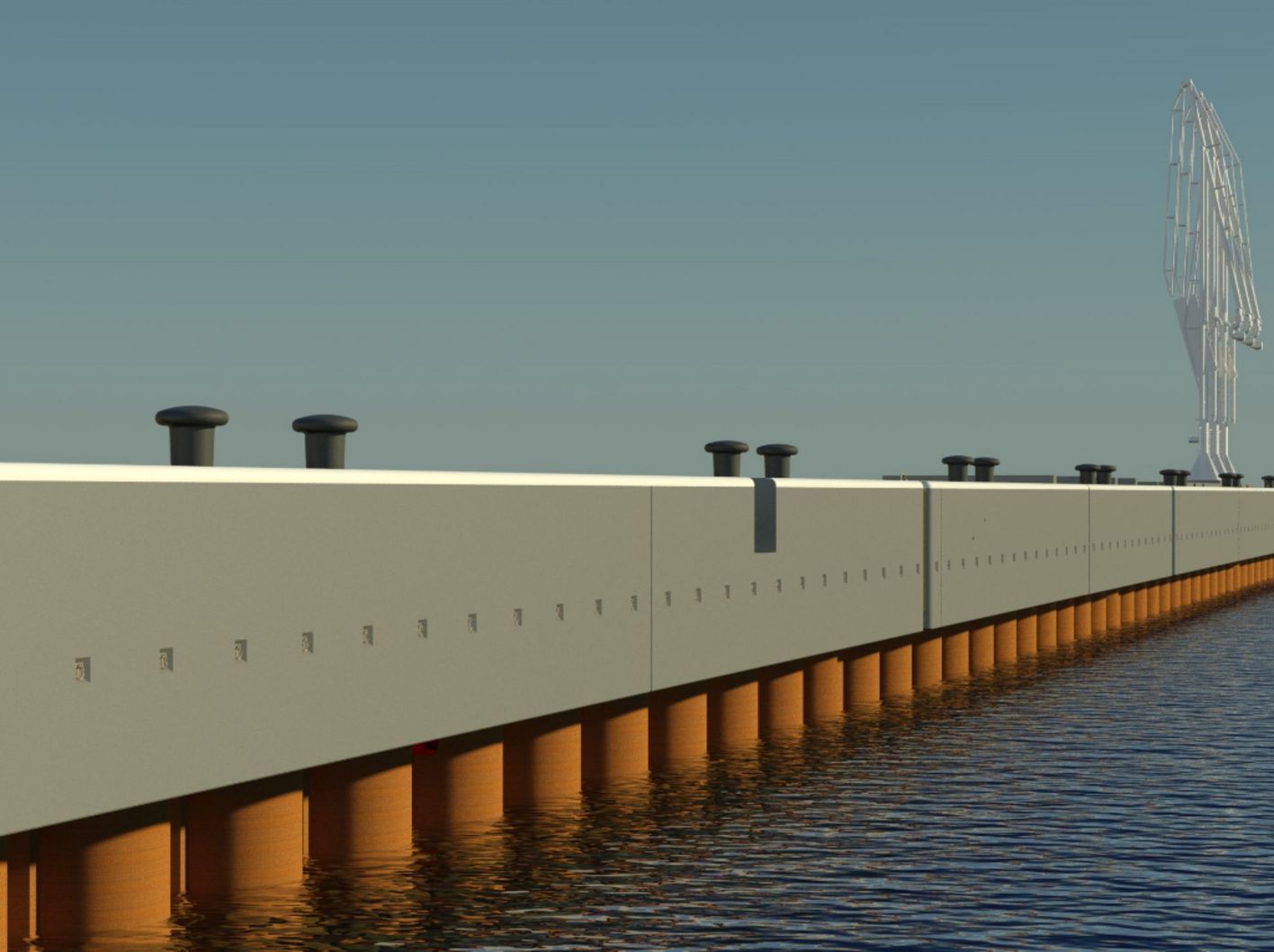Port of Antwerp enlists Witteveen+Bos for consultancy and engineering services in realising new Canal Dock B2
Witteveen+Bos has been a partner of the Port of Antwerp for some time now, providing advice on the repair and maintenance of its quays. The existing terminal on Canal Dock B2 needed refurbishing with two extra berths to accommodate the expansion of a liquid bulk terminal.
At the Port’s request, we focused on the engineering side and developed a design for a brand new quay. This turned out to be quite a challenge, as Canal Dock B2 runs parallel to the Scheldt and its waterway connects several other docks. It is essential that large oil tankers, with draughts of around fourteen metres, can berth in the dock without obstructing the passage of other ships.
New quay at Canal Dock B2 50m inland
For this reason, we developed a concept during the design phase which placed the new quay 50m inland and connected it seamlessly with the existing environment. We also took into account the impact of mooring the oil tankers, as well as the precise size and weight of the loading and unloading facilities.
This led us to opt for a combi-wall quay consisting of steel pipe piles and sheet piling, topped with a concrete pile cap fitted out with bollards. We sketched the whole concept in 3D, after which we used the 3D representations to develop geotechnical models and visualisations. The advantage of this approach is that several issues could be closely examined over the quay’s entire length:
- The correct position of the quay
- The safety equipment, such as ladders, safety rings, fire hydrants, etc.
- The loading and unloading facilities, as well as possible negative effects on them
Earth moving study and piling advice form the basis
To achieve all this, large-scale dredging was required. Witteveen+Bos first conducted a soil investigation and geotechnical study, which provided insight into the soil composition and its bearing capacity. Based on this, we formulated advice for earth moving and dredging that aided the retaining of soil during dredging works. As a result, the new quay connects seamlessly with the existing quays and the possibility of it being deformed during earth moving and dredging was eliminated.
Witteveen+Bos formulated advice on piling so as to provide the Port of Antwerp with assurances of stability during both construction and use of the quay. This concerned, in particular, the positioning of the pipe piles, which could not be placed deep.
Quayside power bays reduce emissions during loading and unloading
The Port of Antwerp also set out additional requirements for limiting the emission of greenhouse gases in the port area. We took these into account in the design too. For example, we incorporated power bays at regular intervals along the quay to supply power to container ships during loading and unloading.
Close partnership leads to success
On this project we worked closely with SECO, who carried out additional design checks in its role as consultant to the Port of Antwerp. The objective of this was to offer the client further guarantees in connection with a liability period of ten years.
We are also always interested in finding the right partnership arrangement to guarantee the best result in terms of works execution. Following an initial diving inspection and dredging of the berths, it became apparent that some sheet piles were not fully attached to the pipe piles. Thanks to this knowledge and a clear debriefing of the contractor, a problem like this can be quickly and appropriately rectified.
Do you have plans to build new quays or make alterations to existing ones? Witteveen+Bos examines the possibilities in detail and incorporates all available options into an integrated 3D model. The advantage: a shorter construction time and minimal implementation risks.
More information?

